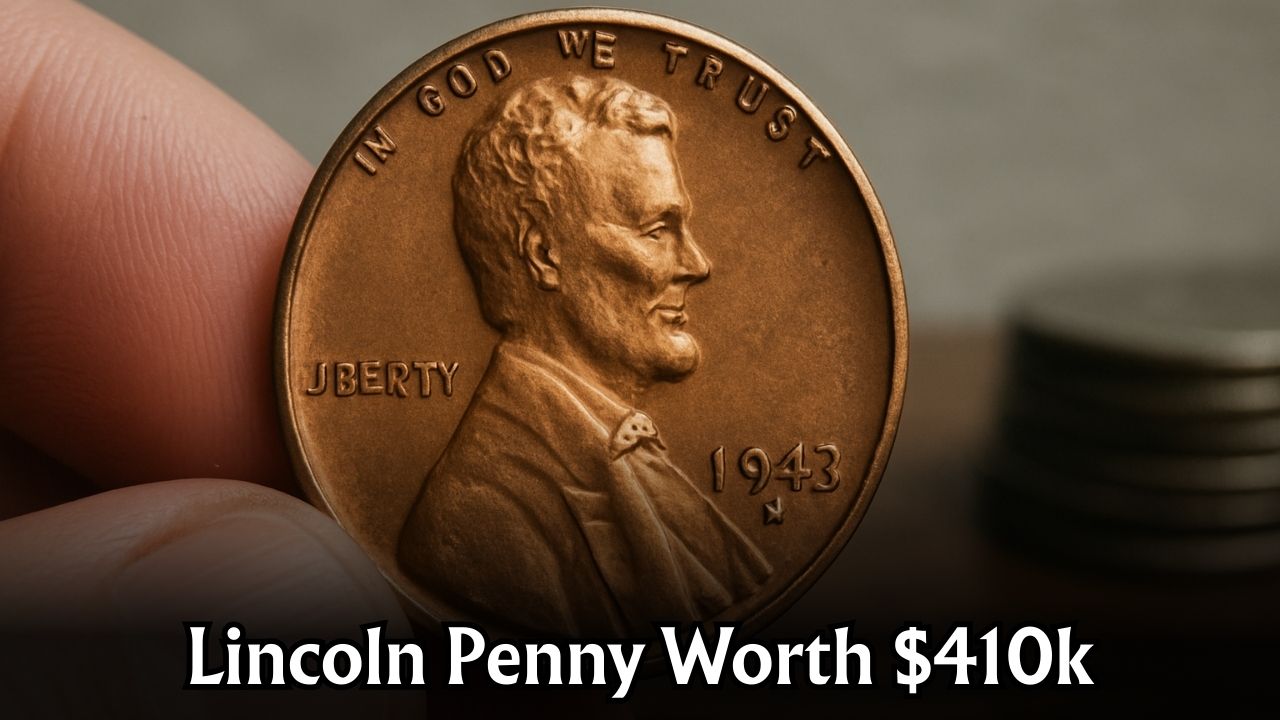Lincoln Wheat Penny – The Lincoln Wheat Penny has become one of the most fascinating discoveries for coin collectors and everyday people alike. This particular coin, valued at a staggering $410,000, is still believed to be in circulation, making it a potential treasure hidden in plain sight. The Lincoln Wheat Penny was originally minted between 1909 and 1958, and while millions were produced, certain rare errors and limited editions have dramatically increased their value. Collectors worldwide are now on high alert, checking their spare change, coin jars, and even old piggy banks in hopes of stumbling upon this historic piece. The rarity comes from specific minting errors, variations in date marks, and unusual conditions that make these coins more than just pocket change. For many, finding one is like striking gold, not just for the financial reward but also for the historical significance tied to one of America’s most iconic coins. This has sparked a wave of excitement across the country.
Why the Lincoln Wheat Penny Is So Valuable
The Lincoln Wheat Penny’s incredible value of $410,000 is linked to its rarity and unique history. Certain editions, especially those minted during years when production errors occurred, are highly sought after by collectors. For example, double die errors, off-center strikes, and misprints make these coins much more valuable than standard issues. Additionally, coins that are still in mint condition or uncirculated have skyrocketed in worth due to their scarcity. The high demand among collectors and the historical appeal of the coin, being one of the first U.S. coins to feature President Abraham Lincoln, further adds to its significance. This combination of scarcity, collector demand, and historical relevance drives the astronomical price tag, making even a single penny capable of changing someone’s financial life overnight.
How To Identify A Rare Lincoln Wheat Penny
Spotting a valuable Lincoln Wheat Penny requires attention to detail. Key dates such as 1909-S VDB, 1914-D, and 1943 copper pennies are among the most famous and valuable examples. Collectors recommend checking for rare features like the designer’s initials (VDB), unusual coloring, or odd weight that can indicate a misprint. Another major factor is the coin’s condition—pennies with little to no wear are considered extremely rare and can fetch hundreds of thousands of dollars. Using a magnifying glass to inspect the date, lettering, and mint mark is crucial for spotting errors. Many collectors also seek professional grading services, which certify authenticity and provide a value estimate. With the right eye, a penny that looks ordinary could in fact be worth a fortune.
The Excitement Around Hidden Treasures
The idea that a $410,000 Lincoln Wheat Penny could still be hiding in circulation creates a sense of mystery and excitement. People are now more likely to carefully check their coins instead of dismissing them as ordinary change. Social media has amplified this frenzy, with stories of individuals discovering rare coins in the most unexpected places, such as old sock drawers, jars, or flea markets. This phenomenon has encouraged even non-collectors to pay attention to their pocket change, sparking a new interest in coin collecting across all generations. The thought that anyone, at any moment, could come across such a valuable treasure keeps the buzz alive and fuels the hunt.
What To Do If You Find One
If someone believes they’ve found a rare Lincoln Wheat Penny, the first step is to avoid spending it or cleaning it, as this can reduce its value. Instead, the coin should be carefully preserved and evaluated by a professional coin appraiser or grading service. These experts can confirm authenticity, condition, and provide an official value. Once verified, the owner has options—either selling at auction, where bidding wars can drive up the price, or holding onto the coin as an investment. Some people also choose to connect with private collectors who are willing to pay top dollar. With values soaring as high as $410,000, finding one of these pennies could truly be life-changing.
